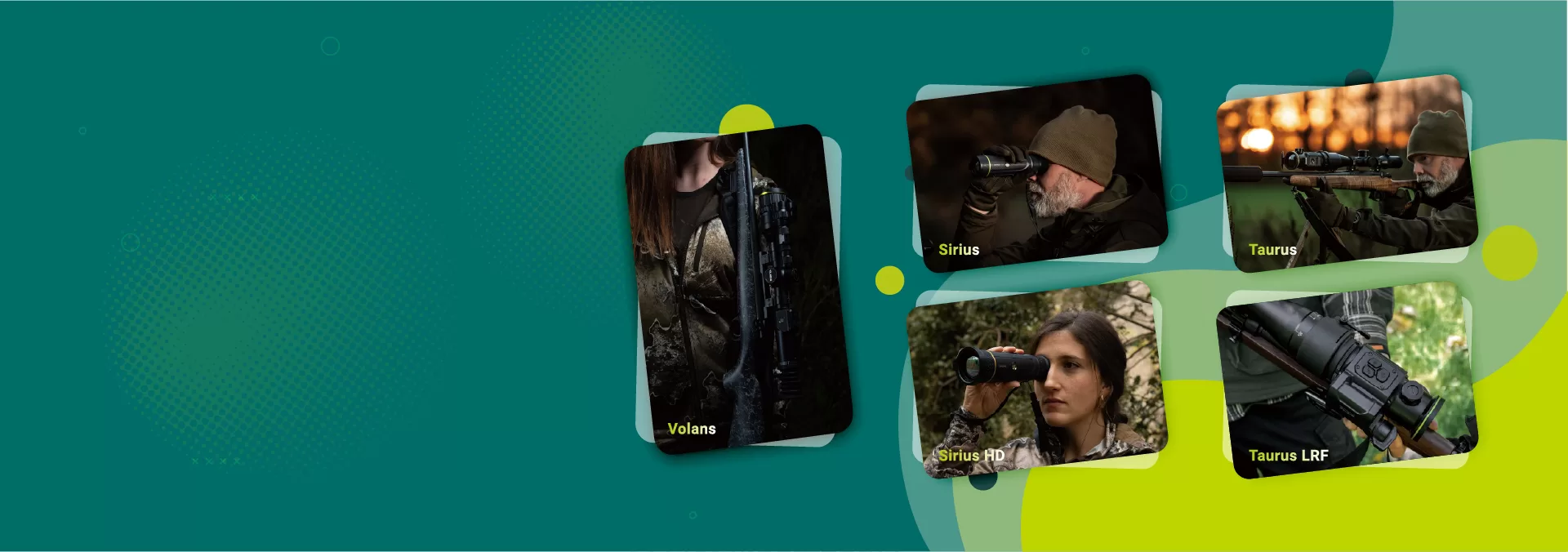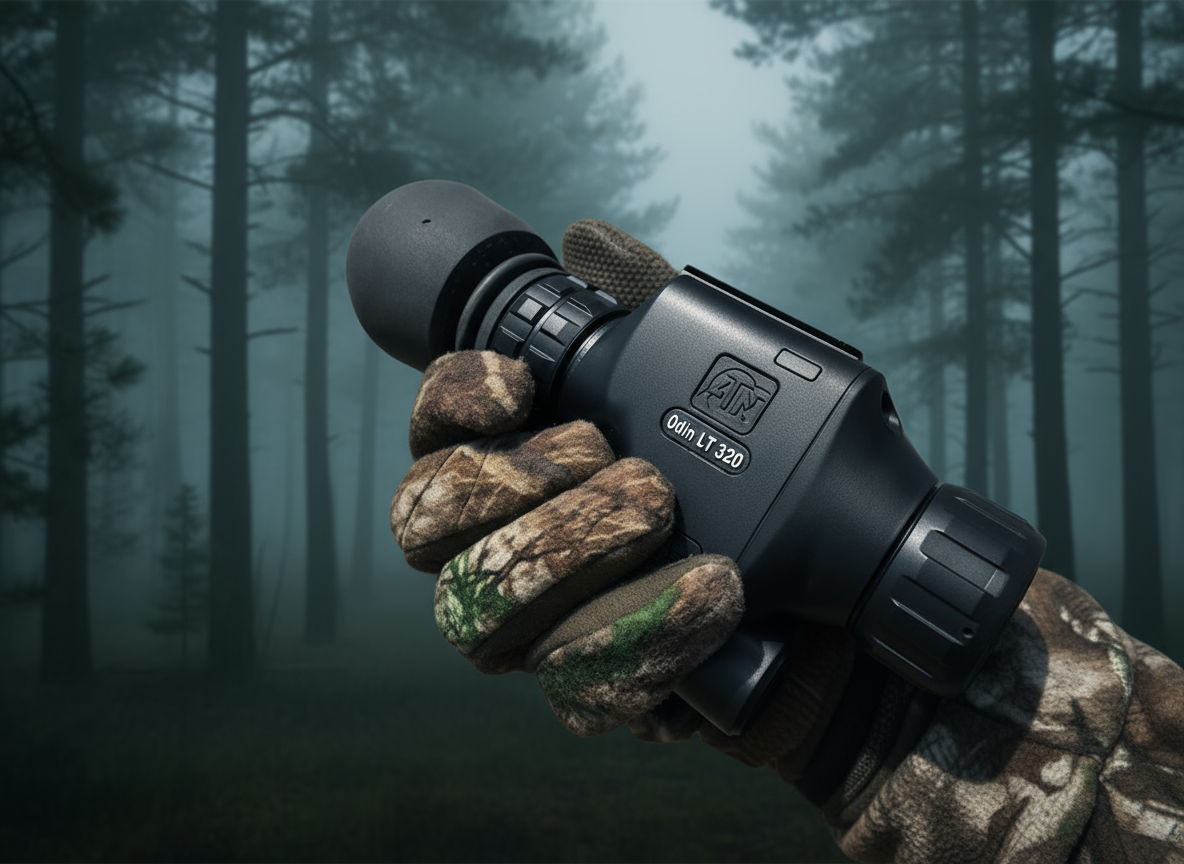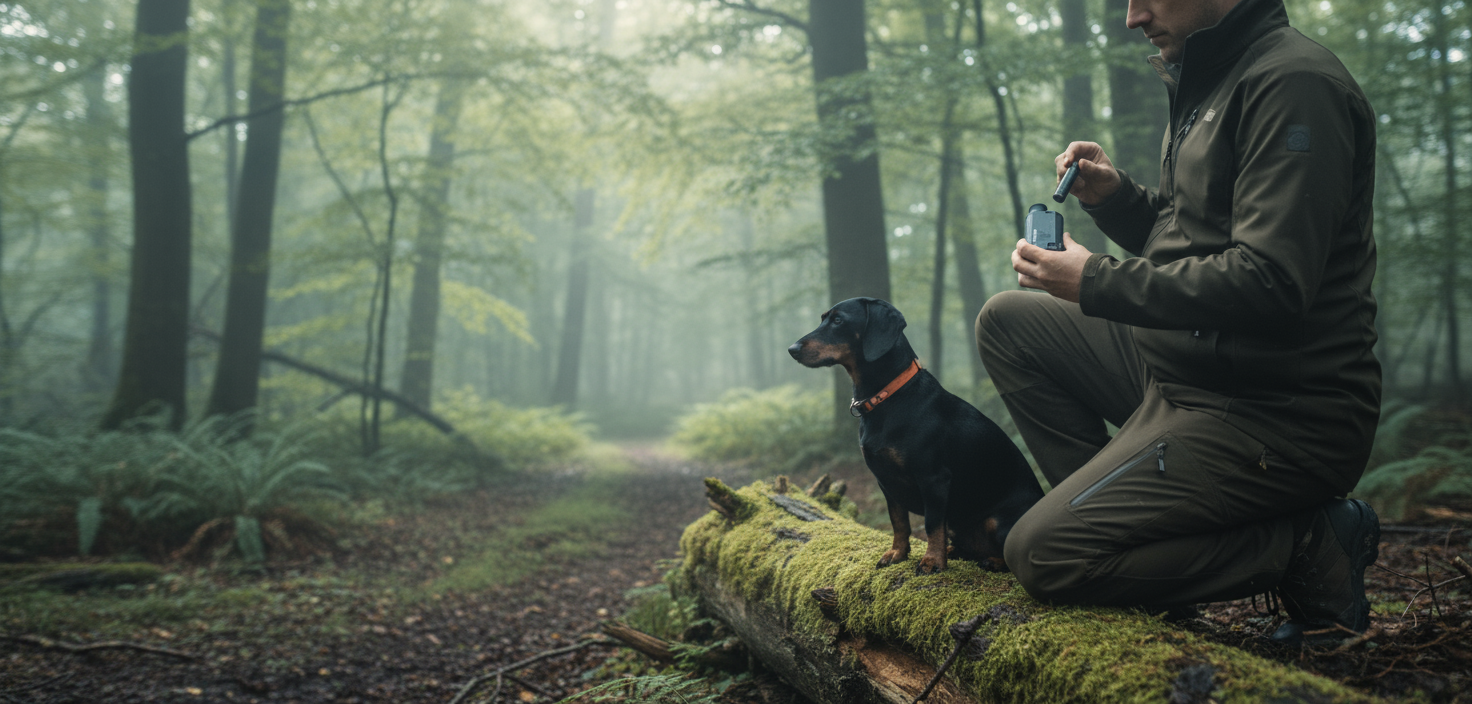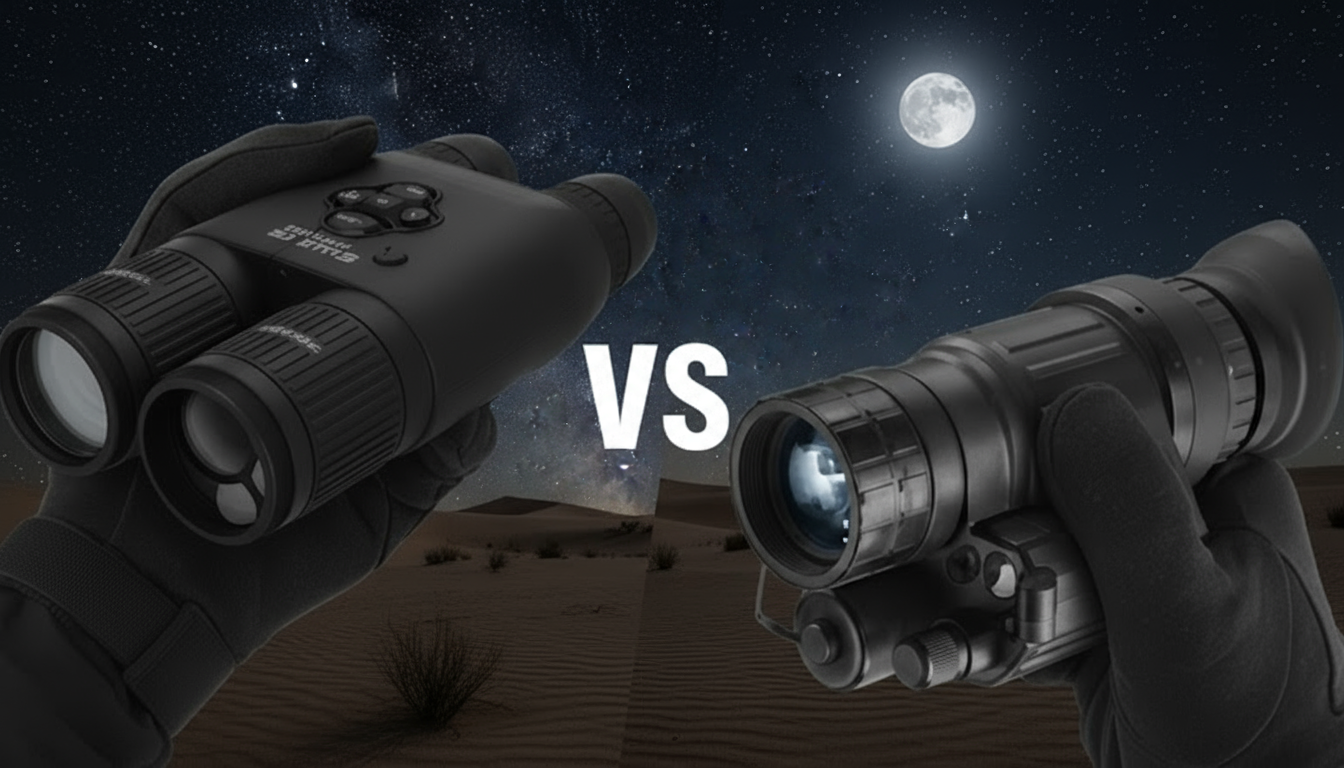When you’re out there in the dark, trying to track down that elusive coyote or looking for deer after sunset, you need every advantage you can get. That’s where a thermal monocular for hunting comes into play. We’re talking about game-changing gear that lets you see heat signatures in complete darkness, through fog, and even through light brush.
Unlike your grandpa’s night vision that needs some moonlight to work, thermal imaging picks up the heat that animals naturally give off. It doesn’t care if it’s pitch black outside or if there’s dense fog rolling in. If there’s something warm out there, you’re going to see it. And trust us, once you start hunting with thermal, there’s no going back to squinting in the dark.
What Makes Thermal Monoculars Perfect for Hunting
Thermal monoculars have become the go-to tool for serious hunters, and it’s easy to see why. These compact devices detect infrared radiation (heat) instead of relying on visible light, which means they work in conditions where traditional optics fail. Whether you’re tracking nocturnal predators or scanning fields at dawn, thermal monoculars give you eyes that can see what’s hiding in the darkness.
The beauty of a monocular setup is that you keep one hand free for your rifle, rangefinder, or just navigating rough terrain. You can pull it out of your pocket, glass an area quickly, and get back to the hunt without lugging around bulky gear. Plus, using one eye helps preserve your natural night vision in the other eye—something binoculars can’t do as well.
Modern thermal monoculars are also surprisingly tough. Most models come with waterproof ratings (look for IP67 or better), so a little rain or snow won’t stop your hunt. They’re built to handle getting knocked around in your pack, dropped in the dirt, and used in freezing temperatures. That’s the kind of reliability you need when you’re miles from your truck.
How to Choose A Thermal Monocular for Hunting
Picking the right thermal monocular isn’t about grabbing the most expensive one on the shelf. It’s about matching the specs to how you actually hunt. Here’s what really matters when you’re shopping around.
Resolution – Critical Factor Influencing Your Hunting Experience
Sensor resolution directly impacts image quality and how much detail you can see. Common resolutions you’ll find are 160×120, 320×240, 384×288, and 640×480. Think of it like your phone’s camera—more pixels mean a clearer picture.
For most hunting situations, a 320×240 or 384×288 resolution hits the sweet spot between performance and price. You’ll be able to identify whether that heat signature is a deer, coyote, or just a stump that’s been soaking up sun all day. If you’re hunting larger properties or need to spot animals beyond 500 yards, stepping up to 640×480 makes sense. But if you’re hunting thick woods where shots are inside 200 yards, don’t break the bank on resolution you won’t use.
The refresh rate (measured in Hertz) is another spec to watch. A 50Hz or 60Hz refresh rate gives you smooth, real-time images without lag. Lower refresh rates like 25Hz or 30Hz can work fine for stationary targets, but if you’re tracking fast-moving predators, that smoother image helps you keep up.
Detection Range and Magnification
Detection range tells you how far out you can spot a heat signature. A human-sized target? Most quality thermal monoculars can detect that anywhere from 500 to over 1,500 yards, depending on the sensor and lens combination. But here’s the thing—detection and identification are two different animals.
You might detect something at 800 yards, but you won’t know if it’s a deer or a cow until you’re closer. That’s why identification range matters more for hunters. For most of us, being able to positively ID game at 200-400 yards is plenty. Check the Pixfra Sirius Series for models that balance detection and identification ranges perfectly for hunting applications.
Magnification is usually digital on thermal monoculars, ranging from 1x base magnification up to 4x, 8x, or even higher. A wider field of view at 1x-2x helps you scan and find targets quickly. Then you can zoom in for a closer look once you’ve spotted something. Just remember that cranking up digital zoom can make the image pixelated, especially on lower resolution sensors.
Battery Life and Power Options
Nothing kills a hunt faster than a dead battery. Modern thermal monoculars offer wildly different battery performance, from as little as 2.5 hours to over 16 hours of continuous use. Look for models that give you at least 5-8 hours of runtime—that covers most hunting sessions without leaving you in the dark.
Some monoculars run on rechargeable lithium batteries built into the unit, while others use standard CR123A batteries you can swap out in the field. Each approach has pros and cons. Built-in batteries are convenient, but if they die, you’re done unless you packed an external power bank. Swappable batteries mean you can carry spares and stay operational longer, but you need to remember to pack extras.
A few higher-end models offer extended battery packs that attach to the monocular and can double or triple your runtime. If you’re doing long observation sessions or all-night predator hunts, that extra juice is worth its weight in gold.
Key Features That Separate Good from Great
Beyond the basic specs, certain features can make your thermal monocular way more useful in the field. Here’s what to look for when comparing models.
Color palettes might sound like something for artists, but they matter. White Hot and Black Hot are the standards—hot objects show up white or black against the background. Some monoculars add Iron Red, Rainbow, or other palettes that can help you pick out details in different conditions. Having multiple options lets you adjust to what your eyes see best.
Built-in rangefinders are a huge upgrade if you’re serious about making ethical shots. Point at your target, click a button, and know exactly how far away it is. No more guessing or pulling out a separate rangefinder that might spook game. Some models even include ballistic calculators that can help dial in your shot.
Video recording and Wi-Fi connectivity let you capture what you’re seeing and share it later. That’s great for reviewing your hunts, showing your buddies that monster buck you spotted, or just documenting your outdoor adventures. Some apps even let you control the monocular from your phone and stream the thermal image to a bigger screen.
Stadiametric rangefinders use a reticle pattern to estimate range based on the size of known targets (like a deer). They’re not as accurate as laser rangefinders, but they work without batteries and can give you a ballpark distance when you need it.
Thermal Monocular vs Binocular vs Scope
Let’s clear up some confusion about the different types of thermal gear and when you’d want each one.
Thermal monoculars are your scanning and spotting tools. Compact, lightweight, easy to use with one hand. They’re what you pull out to glass a field, check a treeline, or track an animal’s movement. You spot with the monocular, then transition to your rifle when it’s time to shoot. The single-eye design helps preserve your night vision and they’re generally more affordable than binoculars with similar specs.
Thermal binoculars use two eyepieces, which can be more comfortable for extended viewing sessions. Using both eyes feels more natural and can reduce eye strain when you’re glassing for hours. The downside? They’re bulkier, heavier, and usually cost significantly more than comparable monoculars. They also cause “night blindness” in both eyes, making it harder to transition back to navigating in the dark without them.
Thermal scopes mount directly to your rifle and are designed for aiming and shooting, not general observation. They have reticles, zeroing systems, and are built to handle recoil. You wouldn’t want to scan around with a rifle all night—that’s exhausting and potentially dangerous. That’s why most serious hunters run both a thermal monocular for spotting and a thermal scope for shooting.
For most hunters, a thermal monocular is the best place to start. You get maximum versatility, portability, and value. Add a thermal scope later if you’re doing a lot of night shooting.
Best Thermal Monocular For The Money
You don’t need to spend five grand to get a solid thermal monocular. Here’s how different price brackets stack up and what you can expect.
Budget Range ($500-$1,500): Entry-level monoculars with 160×120 or 256×192 resolution. These work fine for close-range detection (under 300 yards) and are great starter units to see if thermal hunting is for you. Battery life might be shorter and features more basic, but they’ll still spot game you’d never see with your eyes alone. Brands like AGM and some ATN models hit this price point.
Mid-Range ($1,500-$3,500): This is the sweet spot where most hunters land. You’re looking at 320×240 or 384×288 resolution, decent detection ranges (500-1,000+ yards), and useful features like multiple color palettes, video recording, and 6-10 hours of battery life. Models in this range are rugged enough for serious hunting and have the image quality to make solid identification calls. Check out options from ATN, Pulsar, and AGM in this bracket.
Premium Range ($3,500+): High-resolution sensors (640×480 or higher), exceptional detection ranges (1,500+ yards), integrated laser rangefinders, ballistic calculators, and premium build quality. These monoculars are what professionals and dedicated hunters use. Brands like Pulsar’s Telos series, Trijicon, and top-tier ATN models live here. If you hunt regularly in challenging conditions or need maximum performance, this is where you invest.
Frequently Asked Questions
What is the best resolution for a hunting thermal monocular? For most hunters, a 320×240 or 384×288 resolution offers the best balance of image quality and price, providing clear identification out to 300-500 yards depending on conditions.
How far can you see with a thermal monocular when hunting? Detection ranges vary from 500 yards on budget models to over 2,000 yards on premium units, but practical identification range for hunting is typically 200-600 yards depending on sensor quality and environmental conditions.
Can thermal monoculars work in complete darkness? Yes, thermal monoculars detect heat signatures and work perfectly in total darkness, fog, smoke, and light vegetation where traditional night vision would fail completely.
Do I need a monocular or binocular for hunting? Most hunters prefer monoculars for their lighter weight, lower cost, one-handed operation, and the advantage of preserving night vision in one eye while scanning.
What battery life should I expect from a thermal monocular? Quality hunting thermal monoculars typically offer 5-10 hours of continuous use, with some budget models at 3-4 hours and premium units exceeding 15 hours with extended battery packs.
A thermal monocular for hunting isn’t just another gadget—it’s a tool that fundamentally changes how you hunt after dark. Whether you’re tracking predators, recovering wounded game, or just scouting your property, thermal gives you capabilities that were only available to military and law enforcement a decade ago. Take the time to match your monocular to your actual hunting needs, don’t get sucked into paying for specs you won’t use, and invest in a reputable brand that stands behind their products. Your next hunt will never be the same.







